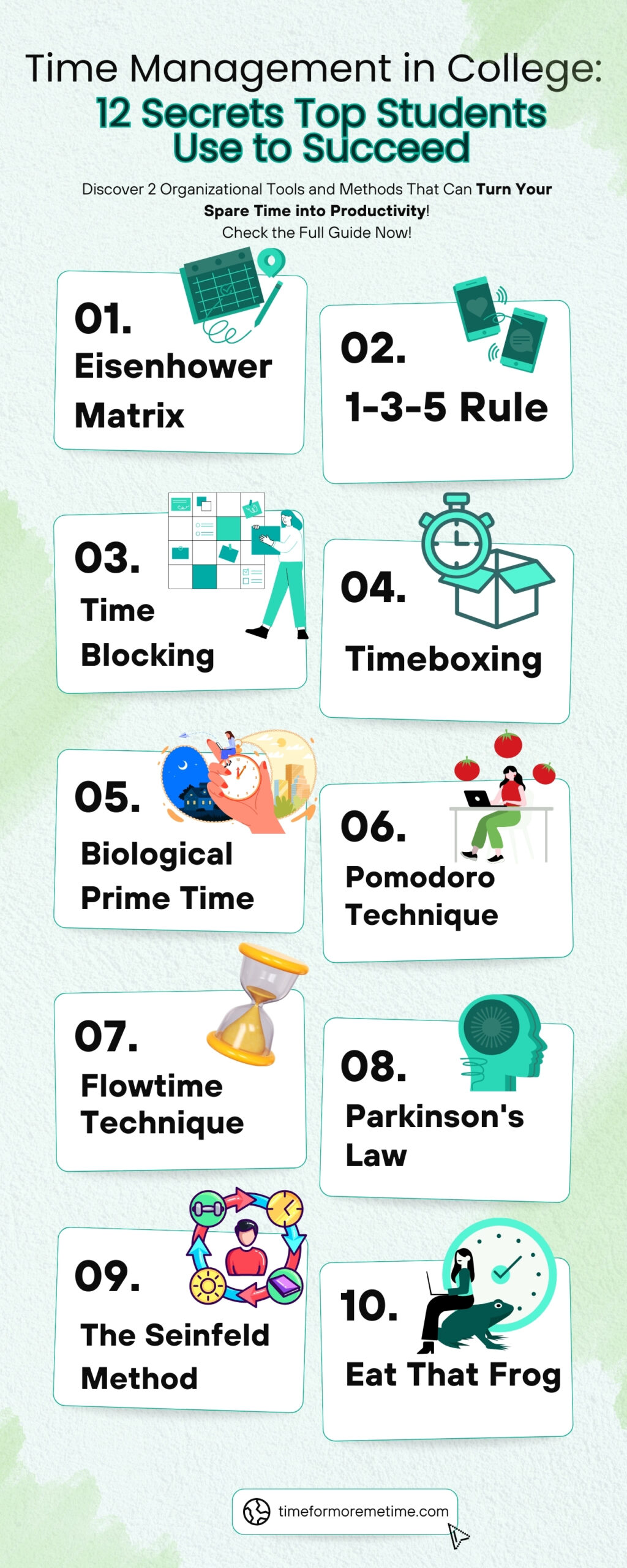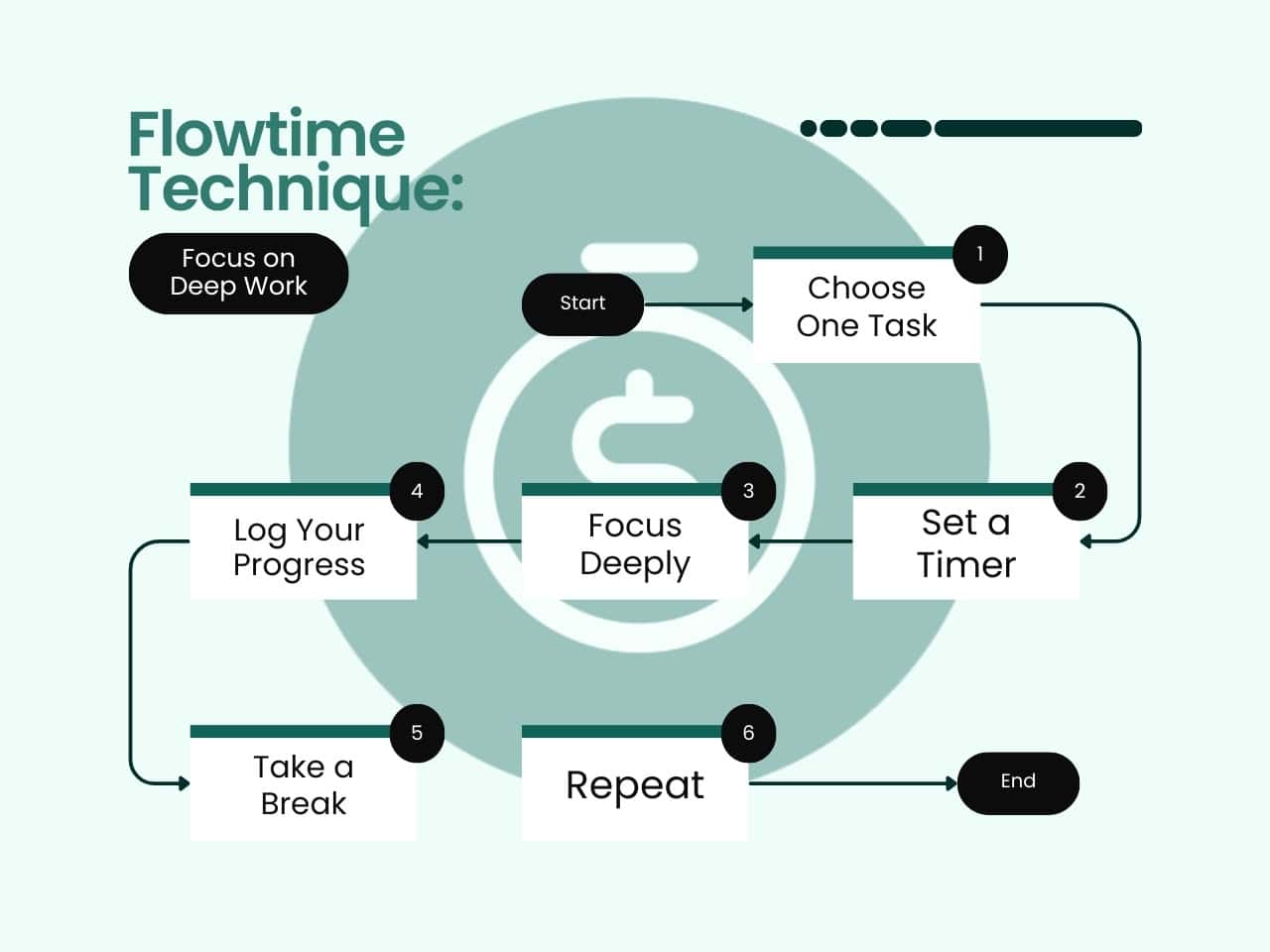Balancing time in college felt nearly impossible when I was earning my three degrees. Between endless assignments, part-time jobs, and trying to keep some kind of social life, I often felt overwhelmed and burned out. Most days ended with me collapsing into bed, completely exhausted.
Adding financial struggles to the mix made things more challenging—I had to learn how to make every minute (and dollar) count.
Here’s what I realized: the students who succeed in college aren’t always the smartest or the hardest-working. They’re the ones who know how to manage their time well.
And by “succeed,” I mean simply graduating. That might seem like a low bar, but for many students, especially those facing financial hardships, even reaching graduation can be a huge challenge. If I remember correctly, only about six out of ten college students graduate and make it to the finish line.
So, how did I manage to survive and earn my degrees? I applied specific strategies that helped me stay on top of my workload. These same strategies not only kept me afloat but also boosted my grades and made what once seemed impossible—earning a degree and two more—a reality.
If you want to graduate and come out on top as well, I’ll share the top 12 strategies I used and observed in other successful students. These practical tips will help you take control of your schedule, improve productivity, and finally improve time management in college.

1. Eisenhower Matrix: Prioritize Like A President
The Eisenhower Matrix is one of the most effective tools for managing time and staying productive. Even now, I use it to sort my tasks and focus on what’s most urgent. This method helps you concentrate on critical tasks by organizing them based on urgency and importance.
It’s a popular approach for a reason—research by Acuity Training found it to be the third most-used time management strategy among 500 professionals. It’s also considered the most successful technique for managing time effectively.
To use the Eisenhower Matrix, draw a simple table with four boxes. These boxes will help you quickly sort your tasks into four categories:
- Do it now (urgent and important)
- Plan it (important but not urgent)
- Delegate it (urgent but not necessary)
- Eliminate it (neither urgent nor essential)
I used this technique to achieve work-life balance and improve my studies and finances during my college years, and it completely transformed how I managed my schedule. It’s a simple yet powerful way to take control of your time, eliminate distractions, and focus on what really matters.
2. 1-3-5 Rule: Simplify Your To-Do List
Got your priorities straight? Great! Now it’s time to organize your tasks into a realistic and manageable to-do list. But don’t just write down a random list—use the 1-3-5 Rule to make it effective.
The 1-3-5 Rule is one of the simplest time management strategies that works for both work and college. It helps you tackle your prioritized tasks in a more focused and efficient way.
Here’s the catch: you’re only allowed one major task, three medium tasks, and five small tasks per day. That’s it! This rule not only organizes your responsibilities but also forces you to be honest about what’s achievable.
Using this approach helps you identify what’s truly important for the day. It’s a reminder that you can’t do everything, but you can make progress on what matters. That’s exactly what I experienced every time I followed this rule—it gave me clarity, focus, and a sense of control over my day.
Another benefit? The 1-3-5 Rule can make you feel more accomplished. Checking off tasks gives you a little dopamine boost, and this method offers plenty of chances to enjoy those small wins, keeping you motivated.
Here’s how your to-do list will look with the 1-3-5 Rule:
- The “1” is your main goal for the day. Accomplishing this will give you a real sense of achievement.
- The “3” are medium tasks—still important, but not as urgent or critical as your main task.
- The “5” are small tasks you can complete quickly, adding to your progress and momentum.
By sticking to this rule, you’ll simplify your to-do list and set yourself up for success each day.
3. Time Blocking: Structure Your Day Efficiently
Let’s dive into managing your time effectively. Here’s a truth to remember: “A cluttered space equals a cluttered mind.”
Even with tools like the Eisenhower Matrix and an organized to-do list, they won’t help much if you don’t actually set time aside to tackle your tasks. A task is just a task until you take action.
With a packed schedule—especially when school takes up most of your day—it’s tough to get through everything on your to-do list. Be honest: when you finally have some free time, you’d probably rather rest or relax than deal with tasks. I completely get it—I’ve been there too.
The solution? Time blocking. While it’s not a revolutionary concept, many people—especially students—overlook just how powerful it can be.
Time blocking is all about setting specific periods in your day for specific tasks. This method helps you stay organized, make steady progress, and avoid distractions. It’s like giving each task its own home in your schedule so you always know when and where to focus.
When I was a student, my day’s time blocks might look like this:
- 9:00 AM–10:00 AM: Answer emails and socialize
10:00 AM–12:00 PM: Work on assignments, review, and tackle to-do list
1:00 PM– 2:00 PM: Lunch- 2:00 PM–8:00 PM: School
So, what will this actually accomplish? Time blocking takes the guesswork out of deciding what to do next. It pushes you to take action instead of falling into the trap of idling, relaxing, or procrastinating. Over time, it helps you build discipline and take better control of your schedule.
But here’s the catch: time blocking only works if you stick to it. If you’re not going to follow your schedule, there’s no point in making one.
In short, time blocking is a simple but effective way to boost productivity. It helps you make the most of your day, leaving you more time to rest and enjoy without guilt. Give it a try—you might be surprised how much it changes your routine.
4. Timeboxing: Work With Fixed Time Limits
If you’re still struggling with time management despite using the earlier strategies, it might be time to try a stricter approach: timeboxing.
Timeboxing involves setting a fixed, non-negotiable amount of time to complete a task. Unlike time blocking, where you can adjust your schedule if something runs over, timeboxing requires you to stop when the time is up, whether the task is finished or not. I usually turn to timeboxing when I have too much on my plate and everything feels overwhelming.
By the way, here’s a quick overview between the differences between time blocking and boxing:
Timeboxing creates a sense of urgency and focus, pushing you to work efficiently and avoid letting tasks drag on indefinitely. While time blocking allows some flexibility, timeboxing enforces strict limits, helping you prevent overextending tasks and make faster decisions.
For instance, instead of saying, “I’ll work on this project in the afternoon,” you’d say, “I’ll work on this project from 2:00 PM to 3:30 PM.” When 3:30 PM rolls around, whether you’re finished or not, you stop and move on to the next task. This shift in mindset keeps you on track and ensures your time is used effectively.
However, be strategic with timeboxing. Some tasks, like those with tight deadlines, may not fit neatly into this method. In such cases, you’ll need to adjust and manage your time more effectively or face the consequences of falling behind.
Both time blocking and timeboxing are valuable tools for managing your day, and they serve different purposes. You can even combine the two to enhance your productivity and time management.
5. Biological Prime Time: Align Your Day With Your Natural Rhythm
Now we’re diving into some nerdy territory—biology, the concept of the “power hour,” and something called Biological Prime Time. I’ll delve deeper into the power hour in a future post, so stay tuned for that!
Many people claim their most productive time of day is in the morning, but that’s not universal. The term “Biological Prime Time” was popularized by Sam Carpenter, an author and entrepreneur, in his book Work the System. The idea is simple: identify and plan around the times of day when your energy and focus are at their peak. By doing so, you can maximize productivity and take advantage of your body’s natural rhythm.
While some people unconsciously lean into their Biological Prime Time, many miss out, choosing instead to linger in bed or spend their supposed peak time doing unplanned activities.
The truth is, everyone’s peak time is different. For some, it’s the morning; for others, it might be the afternoon or even late at night. Here’s how to make the most of your peaks:
- Morning Energy: If you’re a morning person, channel this high-energy period into demanding tasks like studying for exams, writing essays, or tackling difficult projects. For example, you might reserve 8:00 AM to 10:00 AM for deep focus work.
- Afternoon Focus: If your energy builds after lunch, schedule more challenging tasks from around 1:00 PM to 3:30 PM, using the morning for lighter activities like reviewing notes or organizing your day.
- Evening Power: Night owls often hit their stride later in the day. Use this time for creative work like brainstorming or refining assignments, say between 8:00 PM and 10:00 PM.
To find your own Biological Prime Time, spend a week tracking your energy and concentration levels throughout the day. Once you identify your natural peak hours, structure your schedule to align with them. Working with your body, not against it, can make a world of difference in your productivity and focus.
Knowing this, you can definitely improve the effect of utilizing time blocking and timeboxing.
6. Pomodoro: Embrace Strategic Breaks
Let’s shift gears from time management to a strategy for improving efficiency—the Pomodoro Technique. Developed in the 1990s, this method is perfect for anyone who gets bored, distracted, or burned out when tackling tasks.
The Pomodoro Technique is particularly effective for students and those in desk jobs. Personally, I haven’t used it much lately because my work keeps me constantly on the move, but it’s a game-changer if your tasks involve prolonged focus.
Here’s how it works: you break your work into short, focused intervals called “Pomodoros,” usually 25 minutes long, followed by a 5-minute break. After completing four Pomodoros, you reward yourself with a longer break of 15 to 30 minutes.
For example, if you’re studying for an exam, set a timer for 25 minutes and focus on one subject or topic. When the timer goes off, take a 5-minute break to stretch, grab a snack, or take a short walk. Repeat this cycle four times, then enjoy a longer break to recharge.
For writing essays, use one Pomodoro to outline, the next to draft, and others for editing or research. In group projects, dedicate Pomodoros to tasks like brainstorming, assigning roles, or reviewing progress.
The beauty of this method lies in its simplicity. Working in short bursts with regular breaks helps maintain focus, reduce mental fatigue, and make large tasks feel more manageable. It’s an excellent way to stay productive while avoiding burnout and distractions. Give it a try—it might just become your new go-to productivity hack..
7. Flowtime Technique: Focus On Deep Work

Another way to boost your efficiency is by using the Flowtime technique—one of my favorites! Created by work efficiency coach Dionatan Moura, this method is designed to help you enter a state of deep focus and stay there for as long as possible.
Unlike the Pomodoro Technique, which breaks work into short bursts, Flowtime encourages you to push into a “flow state” and ride it out until your focus starts to wane. In simple terms, if you get into the groove, you keep working until you hit a natural stopping point.
For those unfamiliar with the concept of flow, it’s a mental and physical state where your skill level matches the challenge at hand. This perfect balance keeps you engaged and makes you lose track of time—you’re completely immersed in the task.
Think of it like playing a video game: when you face a challenging level that you know you can conquer, you get into the flow and keep trying until you succeed or eventually lose motivation. The same idea applies to your work—once you’re in the flow, distractions fade away, and your focus sharpens.
Using the flow state for your tasks helps you complete assignments, projects, or exam prep all in one go. It allows you to work without the pressure of a timer, helping you work faster and more effectively.
Getting into the flow state can be challenging at first, but with practice, you can train yourself to tap into it or emulate it to take full advantage of the Flowtime technique. Here’s a simple step-by-step guide for students:
- Choose One Task: Pick one priority task, like writing an essay, studying for a quiz, or completing a project. Avoid multitasking.
- Set a Timer: When you begin, start a timer. The duration is up to you—try 30 minutes to start.
- Focus Deeply: Work on that one task without interruptions—no phones, emails, or social media.
- Log Your Progress: When you stop, write down how long you worked and what you accomplished.
- Take a Break: Recharge with a short walk, snack, or quick stretch.
- Repeat: Go back to your task or move on to the next one on your list.
The Flowtime technique lets you adjust your work sessions to match your natural energy levels, so you can dive into tasks without worrying about having to stop mid-flow. It’s especially helpful for deep study sessions, essay writing, or any creative project.
Give it a try and see how it helps you stay productive! I promise that mastering this technique can take you far. Even now, I always aim to reach a flow state to complete my work, especially since I can’t use the Pomodoro method anymore.
8. Parkinson’s Law: Set Tight Deadlines
Sometimes, you don’t have the luxury of using the Flowtime technique. After all, this method encourages you to ignore time to focus fully on a task. But, as I mentioned earlier, some tasks come with tight deadlines, and we can’t afford to take as much time as we want.
So, if Flowtime or Pomodoro isn’t an option, you need to make the most of the time you have. One way to do this is by understanding and taking advantage of Parkinson’s Law.
Parkinson’s Law is a principle that suggests the amount of time you need to finish a task depends on how much time you allocate to it. For example, if you give yourself an hour to finish an essay, you’ll likely finish it in that hour.
This idea, introduced by British historian Cyril Northcote Parkinson, shows that work expands to fill the time available. Knowing this can help you manage your time better and become more efficient.
So, how can you use Parkinson’s Law to your advantage?
Set tight deadlines for yourself! Instead of giving yourself all day to answer emails, block out just an hour. Need to write a blog post? Set a time limit, like three hours.
You’ll be surprised at how much more productive you can be when you’re racing against the clock. And I’m sure it’s not just the law at work—it’s also the adrenaline of beating the deadline. It’s definitely helped me countless times!
9. The Seinfeld Method: Build Consistent Habits
As we’ve seen with strategies like Flowtime and Parkinson’s Law, maximizing productivity often comes down to managing time and focusing on tasks with intention. But while time management is crucial, building consistent habits is just as important in achieving your goals.
This is where the Seinfeld Method comes in. Comedian Jerry Seinfeld famously used this technique to build habits, and it’s a great way to stay on track in college or in any aspect of life. The idea is simple: do one small thing every day to build consistency. Whether it’s studying for 30 minutes, eating healthier, or staying active, the key is to keep showing up each day.
Think of it like time management. The more consistently you work on your goals, the more progress you’ll make, no matter how small the steps. Over time, those little actions add up and lead to bigger changes. It’s all about staying consistent, whether you’re working on a long-term project or developing habits that align with your personal goals.
10. Eat That Frog: Conquer The Biggest Task First
We’ve covered a lot about managing your time and staying productive, but there’s one more important strategy to mention: “Eat That Frog,” a concept introduced by Brian Tracy. While the idea of eating a frog might sound unpleasant, it’s all about tackling the hardest task first—the one you’re most likely to avoid.
Think of it like this: if you handle the toughest task early on, the rest of your day feels easier. It’s a bit like eating a frog at the start—you get it out of the way so you can enjoy the “best foods” later. Trust me, I ate a lot of frogs during college, and it really helped!
In college, where you’re balancing assignments, exams, and projects, this method can be a real game changer. By knocking out the biggest, most challenging task first thing, you set the tone for everything else.
Once that big task is behind you, the rest of your day becomes much easier to manage. You’ll feel more accomplished and ready to tackle the smaller tasks with greater focus and energy. It’s all about getting the hard stuff done first, so everything else seems like a breeze.
11. BuJo Method: Organize With A Bullet Journal
Another simple yet powerful way for college students to improve their time management is by using a bullet journal, or BuJo. All you need is a blank notebook and a pen—no fancy tools or apps required. The name might sound fancy, but back then, we just call it making a detailed to-do list!
Anyway, BuJo is a relatively new and advanced version of making to-do lists. I first came across it on YouTube. It’s not just about listing tasks; it’s a flexible system that combines scheduling, brainstorming, and note-taking. By using bullet points, you can organize tasks, events, and ideas all in one place.
This method helps you prioritize what’s most important and track your progress over time.
Many students find bullet journals more effective than apps, especially if they prefer writing things down by hand. It gives you the freedom to create a system that works for you, whether you’re tracking assignments, planning study sessions, or setting personal goals.
Plus, there are endless ideas online to help you customize it to fit your style.
12. The Productivity Journal: Track, Analyze, Improve
Since we’re already talking about journals, let’s also talk about keeping a productivity journal. A productivity journal encourages you to track your daily activities, helping you see where your time goes, recognize unproductive habits, and spot wasted moments.
Doing this allows you to improve your time management skills through data. Over time, you can fine-tune how you handle your college schedule.
Aside from boosting your productivity, writing down your challenges can also benefit your mental health. After all, journaling itself can help reduce stress and clear your mind. Your journal doesn’t need to be fancy; even simple, quick notes will work.
Make a habit of reviewing your notes regularly to identify areas where you can improve your time management. Then, adjust your strategies to make better use of your day. It’s a simple yet effective way to stay organized and maximize your productivity.
Conclusion
In today’s world, graduating from college has never been more important. The key now is to graduate, whether you’re at the top of your class or not. Don’t miss out on this opportunity to gain an advantage in the job market later on, and don’t waste the student debt you’ll accumulate.
To achieve this, you need to be efficient, productive, and manage your time well. Besides the future benefits, by following these “12 secrets,” you can make your college life easier and more enjoyable.
So, be sure to learn and apply these strategies. Good luck!






